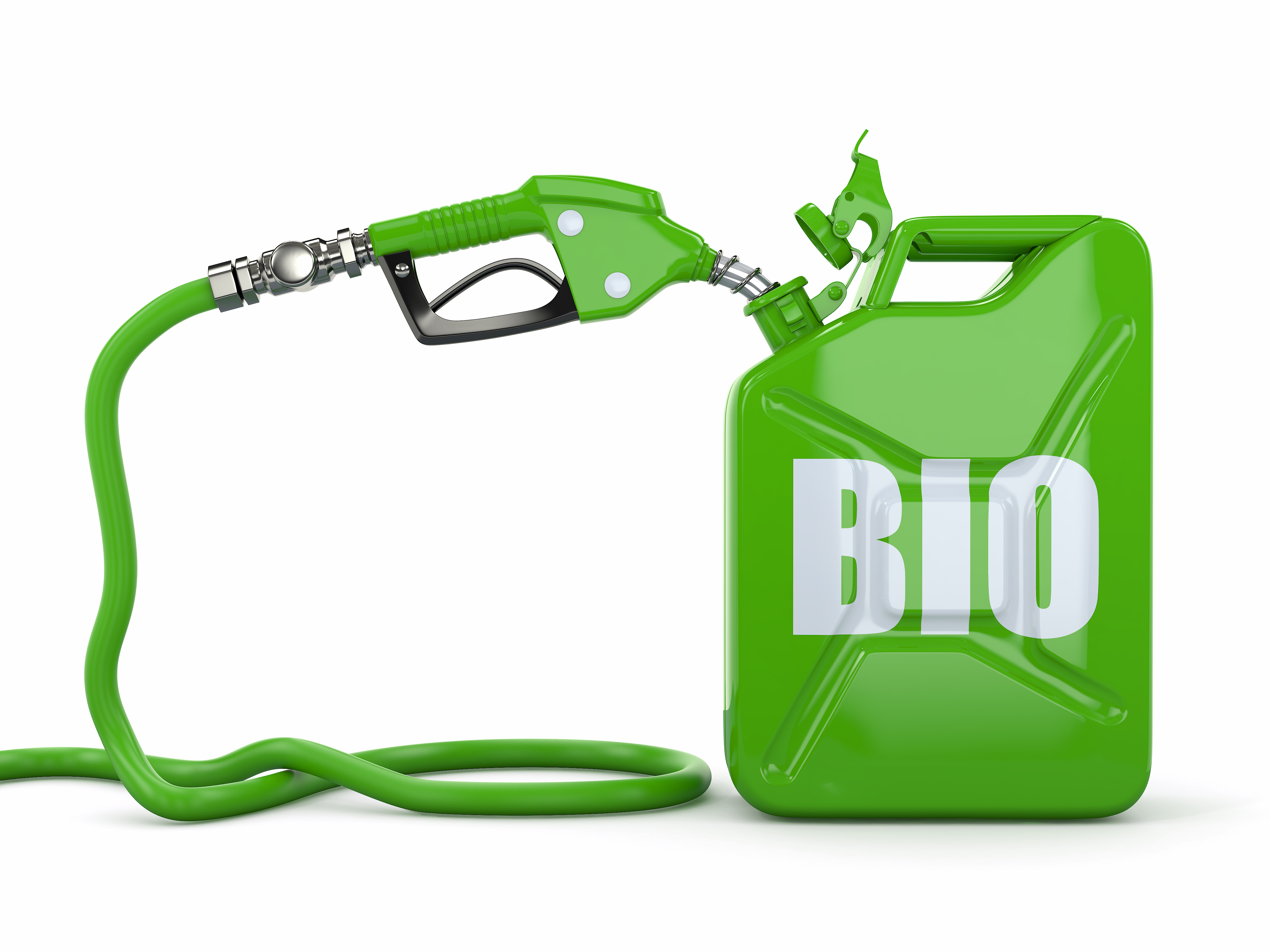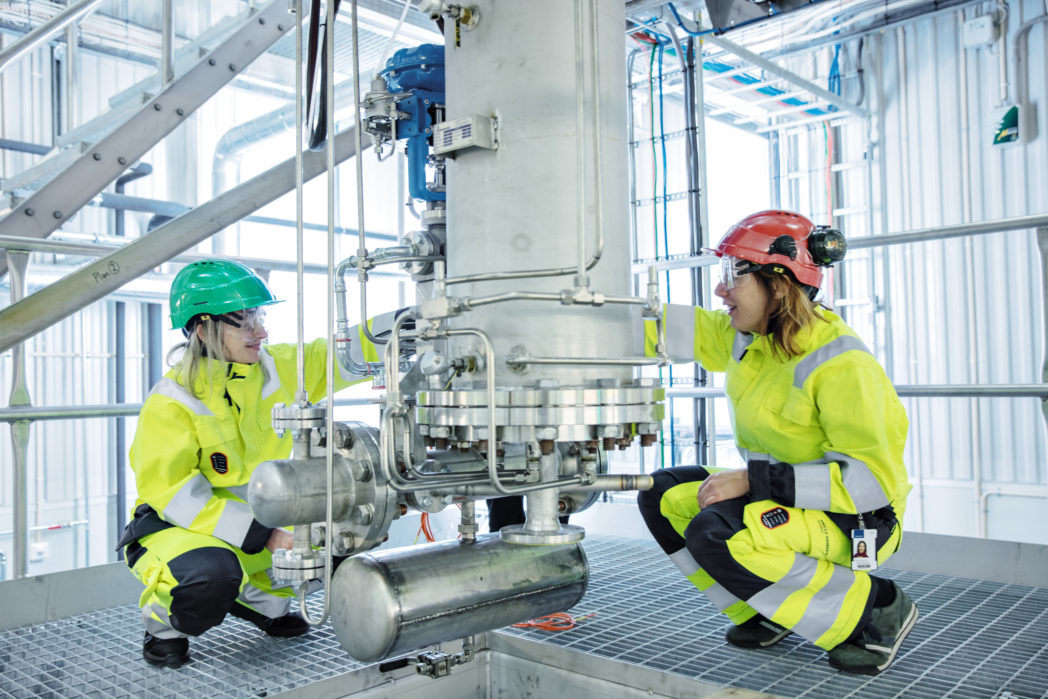Biofuels are fuels derived from biological materials that can be used to replace petrol, diesel and other fossil-based fuels.
If we are to meet our global climate change mitigation goals, we need to include biofuels in the future energy mix. In fact, we need all renewable technologies, and we need them soon. In 2018, the Intergovernmental Panel on Climate Change (IPCC) published a report stating that the increase in global temperatures should be limited to 1.5 degrees Celsius, not 2 degrees Celsius, in order to avoid the major consequences of global warming. During the UN Climate Change Conference (COP26) in Glasgow in 2021, the goal was to keep the 1.5 degree target alive.
This emphasises the importance of getting started now!
The world has sufficient fossil fuels to meet its energy needs for some years yet, but we don’t have the time to wait until we have used them all up.
In this blog, you can find everything you need to know about biofuel subsidy schemes, whether we have sufficient biomass to produce biofuels sustainably, where the greatest need for biofuels is, problems with availability, and global biofuel plans.
This blog is an update of a blog I wrote three years ago.
-
- Biofuels: Fuels created from biological materials. This almost always refers to liquid fuels.
- Biogas: Methane produced from rotting organic materials (anaerobic digestion). In Norway, there are several biogas facilities that use, for example, sewage sludge or food waste to produce biogas.
- Advanced biofuels: Biofuels created from raw materials that are listed in the EU’s Renewable Energy Directive – Annex IX, Part A (RED II)
- Renewable fuels of non-biological origin: Fuels that are produced from other renewable raw materials than biomass. For example, e-fuels, which are made from renewable carbon dioxide and renewable hydrogen.
- Fuels produced from recycled carbon: Fuels produced from non-renewable waste streams, such as captured carbon dioxide or non-recyclable plastic. A key requirement is that the material is not suitable for recycling.
- Sustainable aviation fuels (SAF): Fuels that have been certified in accordance with the applicable standards and can be used in existing flights and infrastructure. This includes both biofuels and renewable fuels of non-biological origin.
Read more: SINTEF’s expertise in bioenergy
Dependence on subsidies
Biofuels have been promoted in the political sphere because their production is dependent on subsidies that narrow the gap between production costs and market prices.
The production of advanced, or “second-generation”, biofuels is even more dependent on effective subsidy systems, as the technologies have not yet become commercialised. These fuels are produced from raw ingredients that do not compete with food production, such as leftovers and waste from the food industry, agriculture or forestry.
In order to develop advanced biofuels, the subsidy systems must be stable and in place long enough to enable acceptable levels of large-scale and profitable production, as well as the production of profitable side streams, such as chemicals or other by-products that can be sold at a premium.
Do we have enough biomass to manufacture biofuels?
Many people forget that bioenergy is the leading form of renewable energy. In fact, it is responsible for as much energy as all the other forms of renewable energy put together. This is proof of the importance of bioenergy, which will play a key role in the future energy mix.
Biomass is used for many things, but currently around half is used for generating heat and cooking. In addition, many people use and want to use biomass in construction as well as manufacturing furniture, chemicals, paper and fibres.
Furthermore, the metal industry has stated its intention to replace coal with biomass as a reducing agent. For example, the Norwegian company Elkem is aiming for 40% of its reducing agents to be derived from renewable biomass by 2030 and 100% by 2050. They currently use carbon from coal to remove oxygen from quartz in silicon production. If we add this to the significant increase in biofuel consumption, there will be an even greater need for biomass in the future.

While the world appears to be able to produce sufficient biomass for our needs, we must make sure that all production is sustainable. Advanced biofuels from forestry, agricultural and industrial remains, and waste fractions can be produced in large volumes. However, the relevant technologies need to be commercialised first. We can also identify new methods for increasing efficiency and preventing half of the carbon from being converted to CO2 and lost during the production process.
Where is the greatest need for biofuels?
Electrification has been successful in several sectors, such as the Norwegian initiative to promote electric cars.
But electrification is not a silver bullet. Some industrial sectors need biofuels. For example, it may be difficult to run electricity cables to remove locations for charging heavy construction machinery. Moreover, these locations typically use diesel to generate electricity, which does not make the electricity production environmentally friendly.
There are also some sectors, such as aviation and shipping, that are dependent on fuels with a high energy density. They must make efficient use of space on board the plane or ship, and therefore have get as much energy as possible from every kilo of fuel.
To a certain extent, long-distance transport is also dependent on high-density fuels and rapid refuelling.

Problem: Greatest need – poor availability
Unfortunately, the sectors that need biofuels the most also struggle the most with availability. Biofuels are most commonly used in road transport, where they are mixed with petrol and diesel. It should be noted that we need to increase production volumes for this sector, especially when it comes to advanced biofuels.
If extremely cheap biofuels are to compete with fossil fuels, there is a danger that production will become increasingly unsustainable.
More global sectors, such as aviation and marine transport, require global measures to tackle this problem, but these are difficult to put in place. These sectors also use much cheaper fuels, particularly in shipping. If extremely cheap biofuels are to compete with fossil fuels, there is a danger that production will become increasingly unsustainable.
Biofuels have been tested in the aviation sector for decades, and several certified methods for producing fuel from biomass have been identified as a result. Norway is at the forefront of implementing these methods in aviation, and currently has a blending mandate for 0.5% of fuel to be advanced biofuel (which is equivalent to 1% when doubled, which is explained a little further down). The blending mandate follows the same rules and principles as it does in the road traffic sector. The current challenge is that there is an insufficient production volume. Therefore, it will be particularly interesting to see whether the blending mandate can trigger production. It is expected that the European blending mandate will eventually be introduced, which will then replace mandates from Norway and other countries.
In the case of maritime shipping, both availability and price can be problems. A more global shipping regulation is also expected, which will feature biofuels as part of the solution. There are already strictly regulated areas in Europe and along the west coast of the United States, where biofuels are foreseen to be sold first. For overseas transport, the use of biofuels will not become realistic for a while, as non-regulated areas use extremely cheap fuel sources (“no man’s land”).
What are Norway’s ambitions?
Norway ruled that 24.5% of traded fuels must be biofuels by 2021, and 9% must be advanced biofuels. Sales of advanced biofuels are considered to be double in relation to “standard” biofuels, which means that 4.5% of fuels must be advanced biofuels.
The Norwegian government also ruled that 0.5% of all aviation fuels must be advanced biofuels by 2020. As biofuels are counted as double, this is equal to 1%. All fuels sold in Norway within the mandate must comply with the EU’s sustainability criteria.
Both the EU and Norway appear to still be promoting imports over domestic production. They are setting quotas, but ambition is low when it comes to production implementation. In other words, we are going to be dependent on imports.
It is therefore important that Norway keeps a close eye on sustainability throughout the entire production process, even though numerous organisations and outsourcing may be involved. It is very positive that Norway has great ambitions, and is using large volumes of biofuel, but we must ensure that the whole value chain remains sustainable.
In recent years, the goal of increasing the blending mandate has been significantly reduced, and it has therefore increased by a small amount. This is probably related to the fact that it is more difficult to verify sustainability for importing, as well as the associated uncertainty. It is also expected that a set of harmonised European regulations will replace national measures, as has been announced within the aviation sector.
Europe’s biofuel ambitions
As part of the Green Deal, the EU has stated their intention to become the first climate neutral continent. To achieve this goal, they need to reduce their greenhouse gas emissions from the European transport sector by 55% before 2030 and 90% before 2050. Adopting renewable technologies is just as urgent as it was when I wrote about biofuels three years ago.
The share of renewables in the European transport sector is now approx. 10% compared to just under 2% in 2005 (based on the energy content). The increase is attributed to a more extensive use of advanced biofuels defined in the Renewable Energy Directive (REDII). Increased electrification has also contributed – but only minimally. As an example, in 2019, Norway’s energy mix for transport consisted of 3% renewable electricity – the highest in the world. This means that we need far more electrification of road transport.
We still need biofuels in the future energy mix to achieve our climate goals. The European ambitions for reducing greenhouse gas emissions are outlined in the latest proposed climate package, Fit for 55, which consists of multiple parts. RED has also been updated, and RED III states the following:
- The proportion of renewable energy in the European energy mix must be at least 40% before 2030
- Advanced biofuels and biogas must comprise at least 0.2%, 0.5% and 2.2% of the energy base by 2022, 2025 and 2030 respectively. Renewable fuels of non-biological origin must cover at least 2.6% of the energy need in the transport sector before 2030
- The greenhouse gas intensity of all renewable fuels and electricity must be reduced by at least 13%
- Enforcement of the sustainability criteria for bioenergy
Aviation is covered by ReFuelEU Aviation, which suggests the following:
- SAF must comprise at least 5% of fuel in 2030 and 63% in 2050, with at least 0.7% and 28% synthetic aviation fuels, respectively.
For shipping, FuelEUMaritime includes the following:
- Greenhouse gases must have been reduced using biogas, renewable fuels, renewable fuels of non-biological origin, and fuels produced from recycled carbon by at least 6% by 2030 and 75% by 2050.
What is the global status of biofuels?
The International Energy Agency (IEA) has prepared sustainable development scenarios, and set targets for all industrial sectors. In the case of the transport sector, the IEA states that 10% of global fuel consumption must be biofuels by 2030.
The global emissions for the transport sector reduced by 10% in 2020 due to the COVID-19 pandemic, but they are on the rise again and an increase is expected in the coming years. Use of biofuels has also been reduced in 2020, partly due to increasing prices of raw materials and partly due to reduced availability. As a result, several countries have reduced their blending mandates.
The IEA believes that biofuels are still the most important means of reducing greenhouse gas emissions from the transport sector. Their map Net Zero by 2050 precludes that 64% of renewable energy in the sector comes from biofuels. In order to achieve this, use of biofuels must be tripled between 2019 and 2030. Currently, biofuels comprise 3% of the total fuel consumption – which means we are far from this goal. The discrepancy is due to high prices, and the IEA hopes that political means will assist in this area in the coming years. The gap between ambitions and reality is significant, and more political intervention is needed to bridge it.









Comments
“Status of Biofuels in Norway and Worldwide in 2022” is a report on the status of biofuels in Norway and worldwide. The report covers the latest news and developments in the field of biofuels. It provides an overview of the latest trends and developments in the global market for biofuels.
pest and building inspection newcastle>